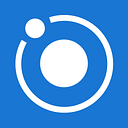Radiologists in Orbit: Xavier Garcia-Rojas
Orbit power-user Xavier Garcia-Rojas MD PhD MBA balances a career in teleradiology with family and entrepreneurship.
Radiologists in Orbit is a new series on Orbit Radiology power-users who are discovering freedom and meaning in this new world of radiology practice that presents adversarial change — business, reimbursement, AI — but also positive trends — work-life balance, more jobs, subspecialty opportunities.
Xavier Garcia-Rojas, MD PhD MBA is a teleradiologist for StatRad and an entrepreneur in Houston. We caught up with him to find out how he navigates his dual career while spending time with his growing family.
How did you go from clinical training to an interest in entrepreneurship?
The Boston environment was key–being immersed in a mélange of intense researchers and world-class clinical specialists. After graduate school and residency, I landed the abdominal imaging and image-guided therapy clinical fellowship at Brigham and Women’s Hospital. That’s where my interest in developing new technology really took off, and starting a company made sense as the way to do that. But fellowship is busy, and company formation didn’t happen right away.
How did you sustain your technology interest right after fellowship?
It wasn’t easy, but taking on a part time clinical job made it possible to continue my business interests in my first three years out of fellowship. I moved back to Houston — I’m originally from Texas — and started part-time work for a group there. From 2013–2015, I finished the Professional MBA program at Rice, and from 2015–2016 I was in the first class of the Texas Medical Center Biodesign Program.
Despite my non-stop clinical and business schedule, online dating made it possible for me to develop new relationships.
What was your work-life balance during your post-fellowship MBA?
Pursuing dual tracks comes with sacrifices. On a typical day, I’d finish my clinical shift at 4pm, drive an hour downtown, and work on MBA classes until 9pm — two or three times per week. On nights that I wasn’t in classes, I spent the same amount of time at home doing assignments.
Despite my non-stop clinical and business schedule, online dating made it possible for me to develop new relationships. I met my future wife Sana on Match.com — she teaches high school statistics in Houston. It would have been nearly impossible to meet her in the reading room or at the business school without online dating. We’ve been married for two years now, and we just had our first kid — he’s almost one year old.
Did anything change about your dual interests in radiology and business after becoming a new father?
When I’m off work, I’m 100% focused on my family. Now that we have a baby, he’s even more motivation for me to work efficiently so I can spend more time with him. My baby also sharpened my goals on building financial security — future responsibilities come into focus, and managing risk exposure is key. Overall, I’ve been more selective about my work as it relates to my family time and our financial goals.
And that’s where teleradiology comes in. Working with StatRad has allowed me the flexibility to work from home and stay close to my wife and son. Teleradiology is challenging—the volume is high and you don’t get to have lunch with your colleagues. But the benefits — zero commute, more time with my family, and access to cutting-edge software — makes teleradiology worth it for me.
At my medical device company, I’ve defined a more focused role that leverages my medical credentials. This way, I can deliver the most value for the time I’m at the company.
It would be better for everyone if LPs could be simple and fast without image guidance.
Tell me about the medical device company you co-founded.
It turns out that more and more lumbar punctures are being done by radiology instead of by the ER and inpatient physicians. This is inefficient for everyone involved — it would be better for everyone if LPs could be simple and fast without image guidance.
While completing the Texas Medical Center Biodesign Program, I met an incredible team of mechanical engineers, and we learned the entrepreneurship skills to convert this clinical intuition into a product. Together, we founded Intuitap to make bedside lumbar puncture fast and simple. We’re now in our third year and going strong.
What key insight did you have about entrepreneurship from your experience with Intuitap?
Team up with people that have complementary expertise if you want to go faster and farther. In our case, my expertise in radiology combined with our awesome mechanical engineers has allowed us to create deep technology that was uniquely made possible by interdisciplinary collaboration.
Be concise, have a great collection of templates, and use technology to make your life easier.
What advice do you have to radiologists getting started with independent practice?
Be concise, have a great collection of templates, and use technology to make your life easier. rScriptor has recently accelerated my dictations by automatically sorting my sentences into the relevant sections of the report. Orbit Radiology helps me compete my CME while I’m dictating. When I’m done with shift, I’m also done with CME credits, and it’s all about quality time with my family at home and on vacation.
— Orbit Staff
Radiologists in Orbit is a new series on Orbit power-users who are discovering freedom and meaning in this new world of radiology practice that presents adversarial change — business, reimbursement, AI — but also positive trends — work-life balance, more jobs, subspecialty opportunities.
To nominate yourself or another provider to be featured in Radiologists in Orbit, email us at support@orbitcme.com and tell us how you (or they) build work efficiency and pursue life beyond the reading room.
